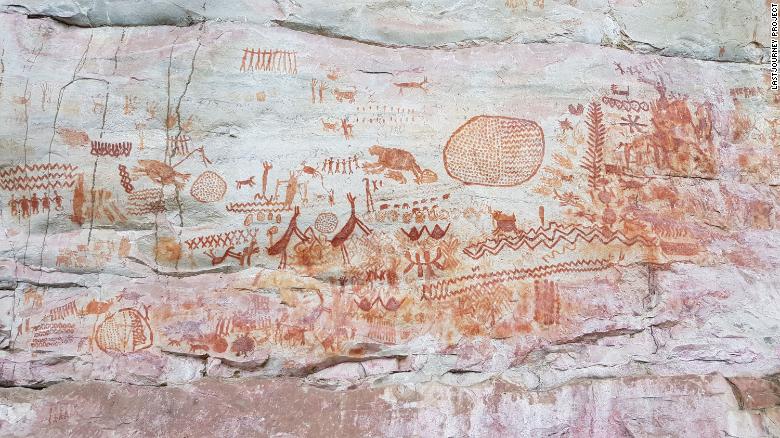
© CNN News
Pre-reading questions:
I will read each question. Then, please answer them.
- Which animal do you think is the most endangered and why?
- What is your opinion of giant animals?
Vocabulary:
I will read the words, meanings, and sample sentences. Then, repeat after me.
- porcupine /PAWR-kyuh-pahyn/
- naturalistic /nach-er-uh-LIS-tik/
- visible /VIZ-uh-buhl/
- debatable /dih-BEY-tuh-buhl/
- lineage /LIN-ee-ij/
[noun] – an animal with a covering of long, sharp quills (= stiff hairs like needles) on its back
I found a porcupine by the riverside.
[adjective] – similar to what exists in nature
Zoos keep the animals in naturalistic settings for their comfort.
[adjective] – able to be seen
Most of the writings in this old book are no longer visible.
[adjective] – not clear or certain because different people may have different opinions
The outcome of the experiment is still debatable.
[noun] – all the living things that are related directly to the same living thing that existed long ago
Hannah found out today that she’s from a lineage of sailors.
Article reading:
Please read the whole article. Then, I will check your pronunciation and intonation.
New study reveals that extinct giants are among the species shown in an 8-mile-long (13-kilometer-long) frieze of rock paintings at Serrana de la Lindosa in the Colombian Amazon jungle — art made by some of the region’s oldest humans. “(The paintings) have the whole diversity of Amazonia. Turtles and fishes to jaguars, monkeys and porcupines,” said study author Jose Iriarte, a professor at the University of Exeter’s Department of Archaeology. He further explains that early humans may have come across these large-bodied beasts and painted them in a naturalistic way that shows the visible morphological traits of the animals.
But the discovery of “extinct megafauna” among the gorgeous paintings remains debatable. While Iriarte admits that the new research does not prove this theory, he is confident that they have discovered evidence of early human contact with some of the world’s disappearing giants. The five animals identified in the research are: a large ground sloth with massive claws, a gomphothere (an elephant-like creature with a domed skull, flaring ears, and a trunk), an extinct lineage of the horse with a thick neck, a camelid like a camel or a llama, and a three-toed ungulate with a trunk.
But the discovery of “extinct megafauna” among the gorgeous paintings remains debatable. While Iriarte admits that the new research does not prove this theory, he is confident that they have discovered evidence of early human contact with some of the world’s disappearing giants. The five animals identified in the research are: a large ground sloth with massive claws, a gomphothere (an elephant-like creature with a domed skull, flaring ears, and a trunk), an extinct lineage of the horse with a thick neck, a camelid like a camel or a llama, and a three-toed ungulate with a trunk.
Comprehension questions
I will read each question. Then, please answer them based on the article.
- What was shown in an 8-mile-long frieze of rock paintings at Serrana de la Lindosa?
- How did Jose Iriarte describe the paintings?
- According to Iriarte, how did the early humans paint the large animals?
- Does the new research prove the existence of “extinct megafauna”?
- Kindly enumerate two of the animals identified in the research.
Discussion questions
I will read each question. Then, please answer them.
- Have you seen historical paintings? What do you think about them?
- What is the most unusual animal you have ever seen? Please describe it.
- If you were a researcher, would you be interested to do a study of the rock paintings? Why or why not?
- Do you believe that extinct giant animals existed?
- In your opinion, how would paleontologists benefit from this discovery?